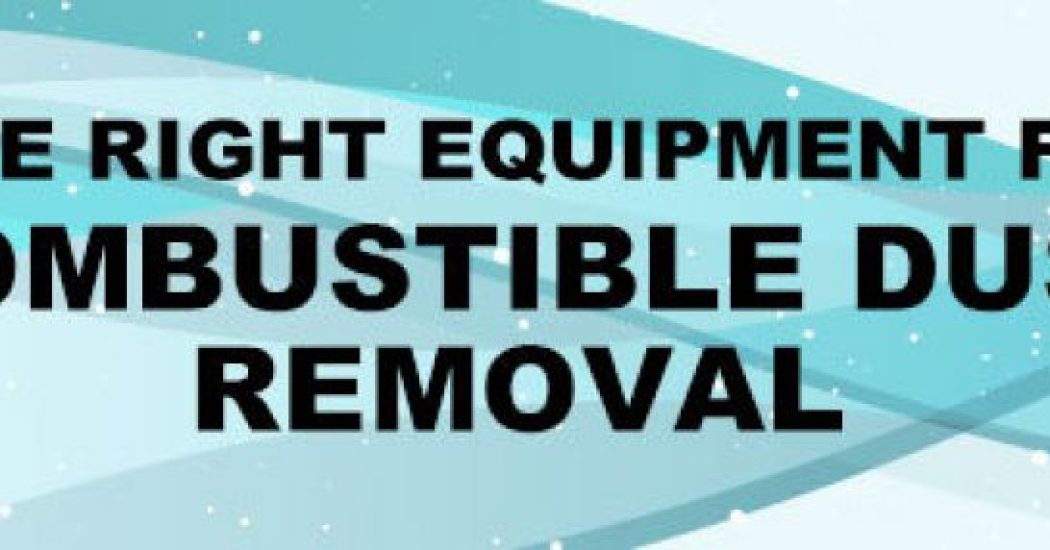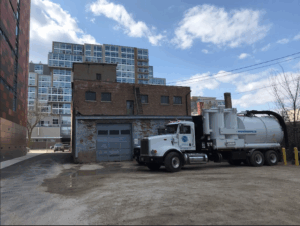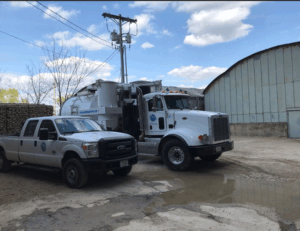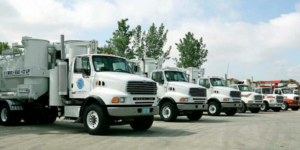A variety of equipment is needed to safely and efficiently remove combustible dust from an industrial facility. Since vacuuming is the OSHA and NFPA recommended method for removing dust, vacuuming equipment is obviously at the top of the list. Dust removal crews also need vacuum accessories, such as hoses, wands, and nozzles, as well as aerial lifts to help workers access places like rafters and ductwork.
“The main thing to keep in mind is that any piece of equipment must be compatible with the media being vacuumed and the environment it will be working in,” says Rob Towey, operations manager for Great Lakes Power Vac, a Wisconsin-based provider of industrial cleaning and environmental services since 2004.
The National Fire Protection Association (NFPA) has created numerous hazard classifications for industrial facilities. The classifications also have subsets that are referred to as divisions. Class II refers to locations where combustible dust is likely to exist. Division 1 denotes areas where a dangerous level of dust is likely to exist during normal operations. With Division 2 areas, it is not expected that normal operations will generate a dangerous level of combustible dust; but, the dust is still present on surfaces in the area, and will require special equipment and attentive care.
SPECIFICALLY DESIGNED WITH EXPLOSION-RISK IN MIND
In combustible dust mitigation, there is a concept known as the Dust Explosion Pentagon. When all five elements converge, there is a strong possibility that a combustible dust cloud explosion could occur. Those five elements are:
- Fuel (dust)
- Oxidizer (oxygen in the air)
- Ignition Source (i.e. spark, flame, hot screw)
- Dispersion
- Confinement
Dust removal equipment must be designed in such a way that the possibility of introducing an ignition source is eliminated.
Compatible, electrically operated vacuum equipment typically carries a Class II, Division 2 rating. These vacuums are independently tested and found to be suitable for use in hazardous locations.. They feature fully grounded, static-dissipating designs and do not have internal brushes or switches, so there is no risk of arcs or sparks that might ignite the dust cloud created inside the vacuum or an external combustible dust cloud.
Another option is using a pneumatically operated vacuum. This type of vacuum is powered by air, as opposed to electricity, so the risk of arcs and sparks is eliminated.
For cleaning the high-reaching areas of a facility, crews must often utilize an aerial lift. Lifts are also rated for different types of hazardous environments. “For a Division 1 area, you need an EX-rated lift, whereas a Division 2 area requires an EE-rated lift,” Towey says.
The bottom line is that an industrial facility with combustible dust should seek a cleaning services provider that understands hazardous locations and can remove the dust as thoroughly, efficiently and safely as possible — with minimal disruption to the facility’s operations.
HIGHLY EFFICIENT DUST REMOVAL EQUIPMENT
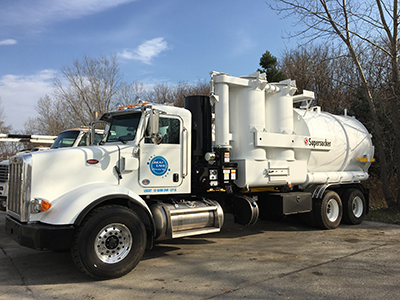
For high volumes of dust, rather than drag small, portable vacuuming units around a facility, a Great Lakes Power Vac crew often utilizes a heavy duty vacuum truck that is parked outside.Hoses are run into the facility for the crew to do its work. This provides several advantages from both a safety and efficiency standpoint.
“Our vac trucks meet several NFPA hazard classifications because they are not in proximity to the work being done,” Towey points out. “We just need to make sure we are utilizing hoses and cleaning tools that are rated for a Class II, Division 2 atmosphere.”
With a portable vacuuming unit, the entire unit must be rated for the environment it is working in because the unit itself is right there in the dust zone. With a vac truck, it’s a different story.
“With our vac truck, the hoses and tools are either groundable and bondable, or static-dissipating,” Towey says. “Generally speaking, you have to use either metal hoses and pipes, or a rubber hose that is impregnated with carbon black to make it static-dissipating. To further enhance safety, our crews use an ohmmeter to ensure that we have proper connections, grounds and bonds throughout the entire system.”
Towey adds a word of caution with respect to vacuum hoses.
“Some cleaning contractors like to use plastic drain tile hose. It may seem like a good option because it’s inexpensive, light and easy to work with. But it should not be used in a combustible dust environment; because, it is not groundable or static-dissipating,” Towey says.
When it comes to combustible dust removal, safety is definitely not a place to start cutting corners. As the saying goes: Safety First. Then, efficiency is a close second. Vac trucks have an advantage here, as well.
Many portable dust vacuums have a collection capacity of roughly 10 gallons. That can be adequate for smaller, more localized cleanup efforts. “If there is just a small amount of dust up on some rafters, it might not be cost-effective to bring in a big vac truck,” Towey says.
But for facilities that require larger-scale cleaning, a vac truck provides a better solution.
“The vacuuming rate is much higher with a vac truck,” says Dan Bemi, general manager for Great Lakes Power Vac. In fact, the company’s vac truck typically pulls at nearly 10x the rate of the typical portable vacuum.
“Smaller, portable vacuum units operate at a much lower negative pressure,” Bemi explains. “Our vac truck is pulling at such a high negative that it is much more efficient. That extra pulling power also helps keep dust from accidentally getting dispersed by the cleaning tools.”
Imagine a Shop-Vac being used to clean a rafter with 6 inches of dust. As the cleaning attachment is being used along the rafter, some of the dust is going to fall off. But there isn’t enough vacuuming power to catch that falling dust.
“With our vac truck, on the other hand, it is pulling so hard that most falling dust gets sucked right back into the hose,” Bemi points out.
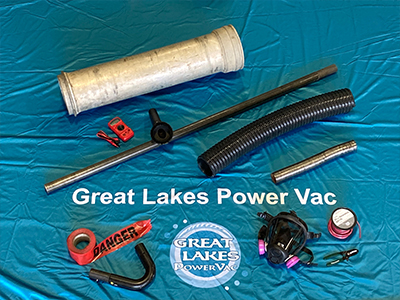
With all of that dust getting sucked up, where does it go? In the case of Great Lakes Power Vac, it lands directly in the massive holding tank on the vacuum truck parked outside of the facility. The tank holds over 10 cubic yards of material, which saves crews a lot of downtime spent emptying portable vacuum cleaner tanks or changing bags. That helps cleanup jobs go much faster — something any industrial facility will appreciate.
When vacuuming in hazardous locations, other equipment considerations can include; use of non-sparking or groundable vacuum tooling (wands, brushes, nozzles, crevice attachments, etc.), the use of personnel grounding straps, and even the type of clothing worn by the personnel (i.e. use of non-static generating materials versus synthetic plastic materials). In some cases (certain metal dusts, gunpowder, toner, solid rocket propellants), the use of specialized liquid recovery vacuums that deposit the dust into a suitable liquid holding tank are the best solution.
In summary, if you intend to use a contractor for removing your combustible dust, be sure to carefully ascertain their familiarity with safe cleaning principles and methods and ask for references and other direct evidence of their experience cleaning combustible dust. You can’t be too safe when working in hazardous locations. One mistake can result in devastating outcomes.

